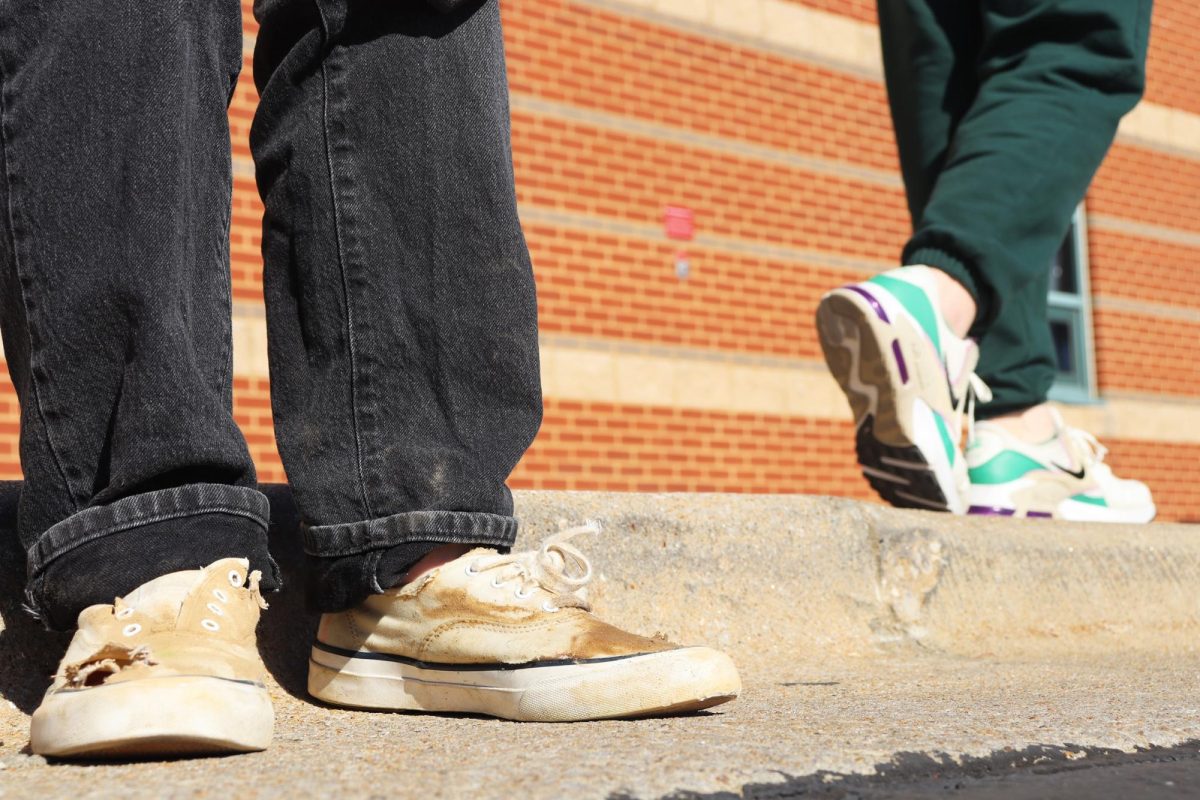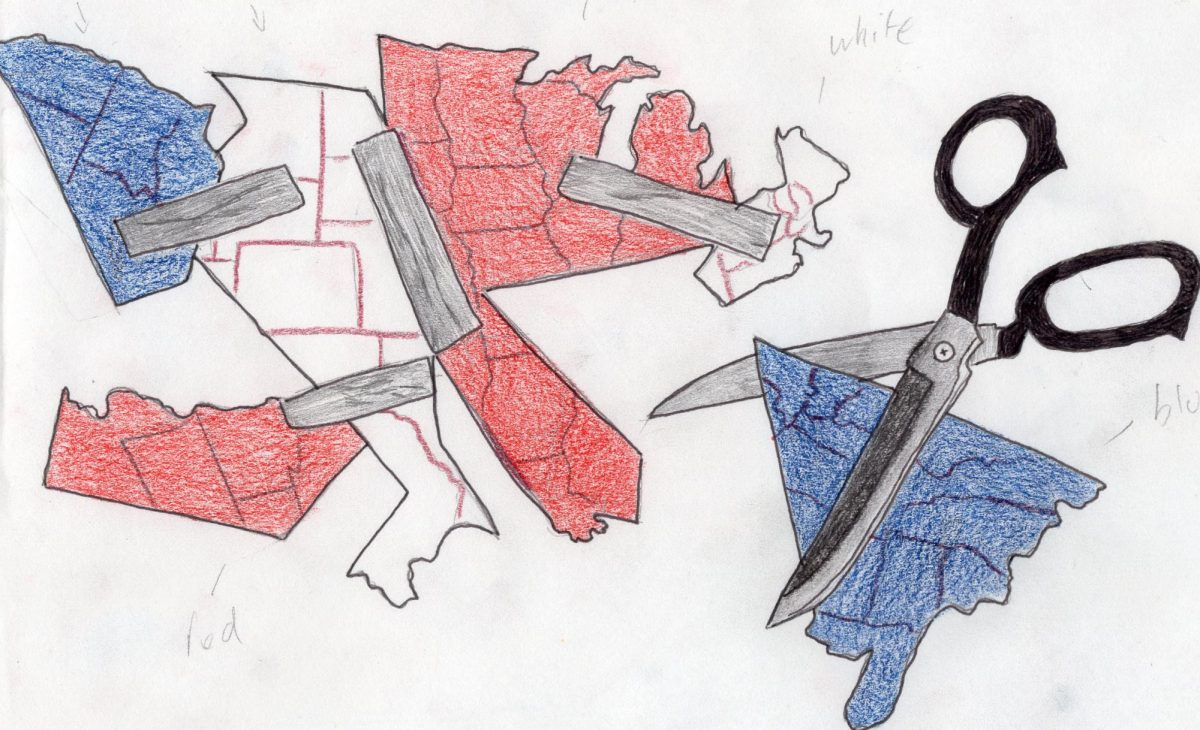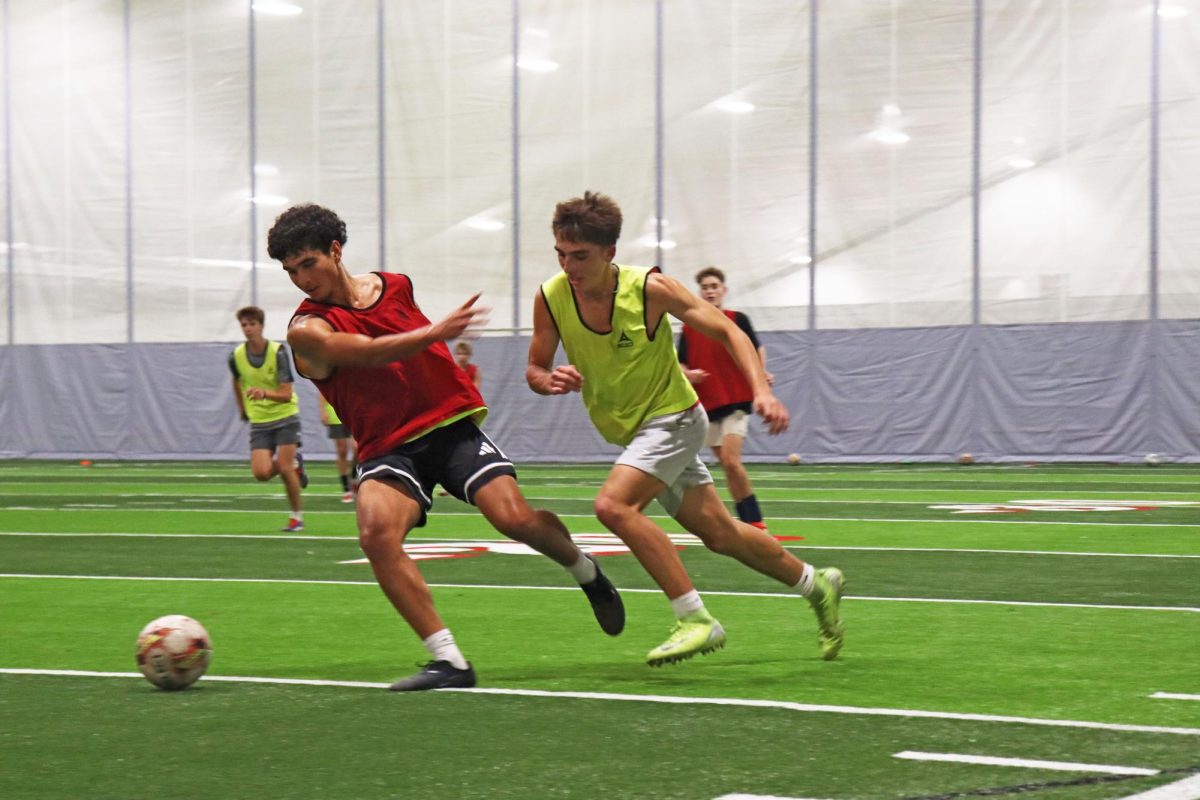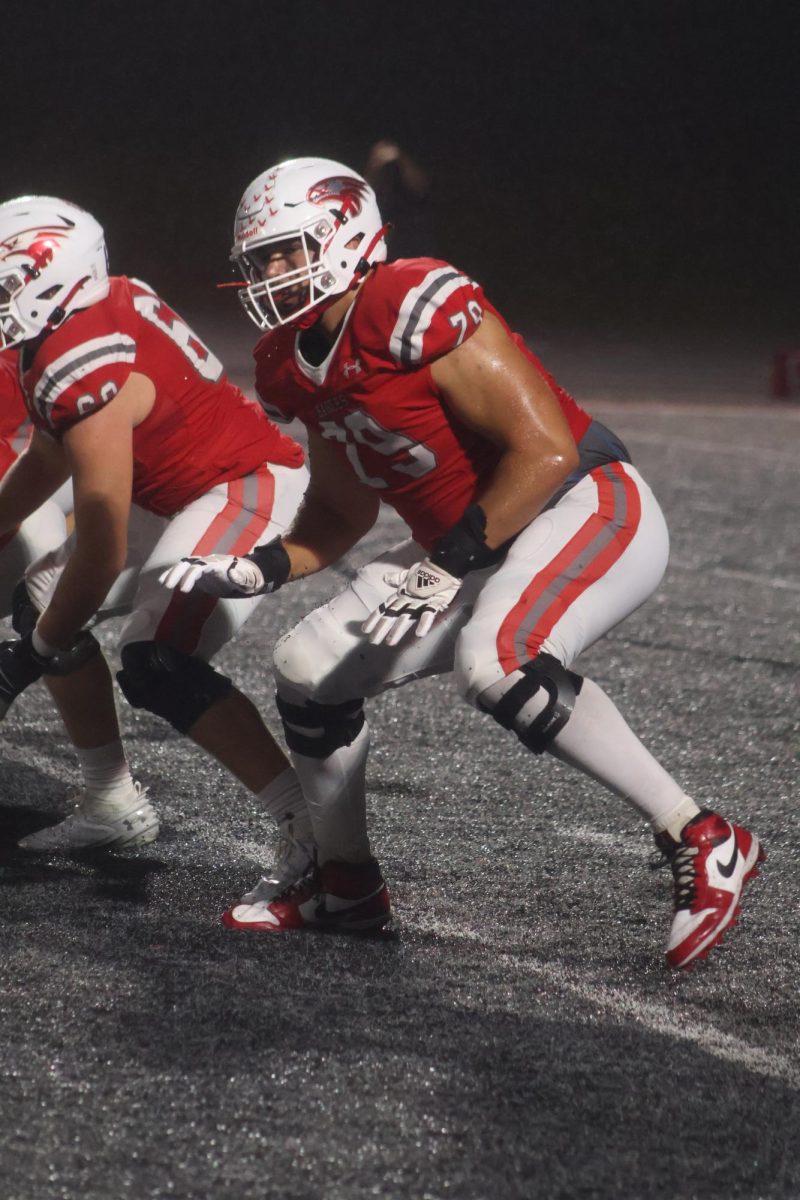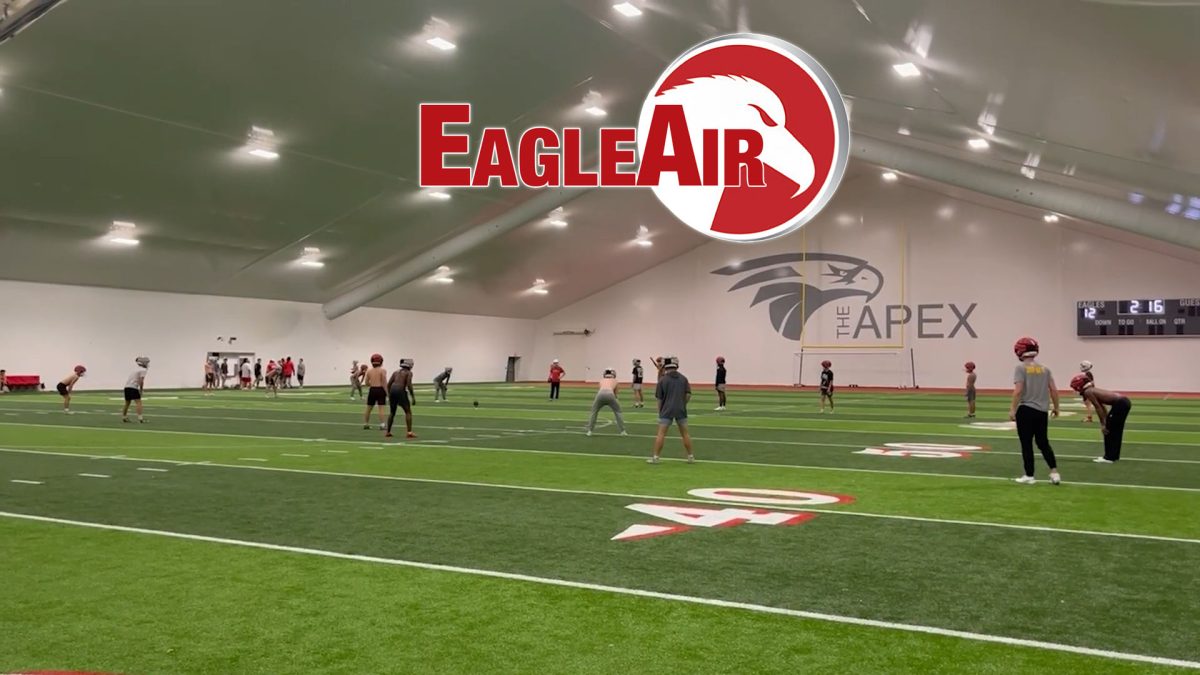As the cold weather season nears, heaters turn on, coats are brought out from the back of the closet and people cozy up next to the fireplace in their warm blankets. However, this isn’t the case for all people in the southwest Missouri area and even beyond; many people struggle to stay warm in cooler months due to economic challenges.
Rue Lohn is the Associate Pastor at The Connecting Grounds Church and works very closely with the unsheltered population through an outreach program. Lohn attributes the struggle to find places of residence to the imbalance of wages versus housing and living costs in the Springfield area.
“Especially during this last year, we’re seeing – and I think because the economic state of Springfield has gotten a lot worse– housing and rent has gone up and minimum wage has stayed the same,” Lohn said. “We’re seeing a lot of people lose housing because they can’t pay rent.”
Since the beginning of the COVID-19 pandemic, the unsheltered population has roughly tripled in size.
“At the beginning of COVID, there were around 900-1,000 people on the streets by [Housing and Urban Development],” Lohn said. “HUD has different levels of criteria for people that are unsheltered; that could be people that are staying in their cars, staying in motel rooms, sleeping on the streets or just not having a secure shelter for a consistent time. So we have kept a street census of people that gives us an idea of how many people meet that definition. Now, this year we’ve jumped up to around 3,000, including families and children.”
Shannon Adam is a former case manager at Rare Breed Youth Services, working with teens at risk of homelessness or current homeless teens. A leading factor of homelessness in youth is the lack of assistance from adult figures in the home.
“Unsheltered teens experience homelessness for a lot of reasons that are out of their control,” Adam said. “A lot of [reasons] are failure of whatever support was in place for them growing up. Mental illness and substance abuse are [also] pretty prevalent in any homeless population, but when you see that with kids so young and they’re on the streets it’s natural for them to not have a support system, so it’s a little more heartbreaking. You have to say, ‘Somebody failed them somewhere.’ There is a small element of [Lesbian, Gay, Bisexual, Transgender, Queer, etcetera issues] where their parents didn’t accept them and put them out [on the streets].”
In what’s called hostile architecture, the unhoused population is placed further at risk, according to Jerry Scott, operation manager at Eden Village.
“It’s a design strategy to purposely restrict access and behavior,” Scott said. “It often targets people who use public places and services on a daily basis.”
The obstacle of hostile architecture creates an unsafe space for people who live on the streets, removing a public space in which they could find shelter.
“Our friends living on the streets encounter barriers each and every day in terms of lack of shelter beds, access to showers, water, storage and transportation barriers,” Scott said. “Hostile architecture adds another barrier in
simply getting through each day.”
A common misconception about the unhoused population often refers back to addiction.
“The thing I see and hear a lot [about the unsheltered] is that they’re lazy, or that they have put themselves there and because of addiction then they have made that decision,” Lohn said. “What I see that is more true is that I know several people on the streets that have full-time jobs and are not able to make rent because they either have evictions on their record that prevent them from getting housing or they’re not just not making enough to pay for rent. As far as addiction goes, obviously, there is a concern for addiction on the streets, [but] I think there’s not a lot of grace given in that. A lot of people use on the streets because their parents introduced them to substances or they’ve had significant trauma. I would say 10 out of 10 people on the streets have had significant trauma that makes it difficult to survive let alone survive sober on the streets.”
While addiction is prevalent in the unsheltered community, the challenge of ending addiction on the streets is a whole other battle.
“A lot of people use different substances to stay awake to avoid [being vulnerable] and so they don’t get caught off guard and get hurt,” Lohn said. “Or, they are using substances to stay warm. … If addiction services were better in Springfield there would probably be more access [to help].”
A large component of the outreach center at The Connecting Grounds Church is to educate and inform the community they serve, constantly providing resources for the at-risk population.
“As we saw [the week of Halloween], cold weather shelters weren’t going to open because it was technically before the crisis cold weather season, which [starts] November first,” Lohn said. “We work with different partners in the community to open a shelter with 100 different spots for people. Whenever those gaps in crises occur, we try to advocate for more shelters to be open and communicating with the people we see daily, saying, ‘Hey, we have shelter beds open, you need to get to dinner so you can get to the bus and get to a shelter.’ [We do] just a lot of education on how to access different resources.”
As a result of The Connecting Grounds receiving donations in the community, the church is able to help rid of barriers that could otherwise harm the unsheltered.
“A lot of food banks and community resources are funded through the state, and the state requires proof of identity,” Lohn said. “We are funded through donations and people giving what they can [from the community], so we don’t have any sort of requirements. That’s strategic because there are a lot of people that don’t have IDs because they lost them or they get stolen and that creates a huge barrier for people to access food.”
However, there are people who do help and offer relief for this struggling population. Adam notes a certain person who made a big impact on her career as a case manager for children.
“We have a local hero here, his name is Jim Payne,” Adam said. “He doesn’t like to get a lot of credit. … He would pay for all our kiddos to go to Jimm’s Steakhouse and get a Christmas dinner. They could order whatever they wanted. As the case manager, we were allowed to spend $100-$150 a piece for Christmas presents for [the kids] and that was amazing.”
Surviving Without: Homelessness rises in the Ozarks
A small look into the large increase of unsheltered individuals
Deliliah Neff, Managing Editor
December 14, 2023
“You can’t expect anyone who is living outside to thrive” – Shannon Adam, former case manager at Rare Breed Youth Services
0
More to Discover
About the Contributors

Deliliah Neff, Managing Editor
Hey, I’m Deliliah Neff and I’m the Managing Editor for the 2023-24 school year. I joined Wingspan at the start of my junior year, 2022-23. I love being able to hear people’s stories and talk to people I wouldn’t normally talk to.
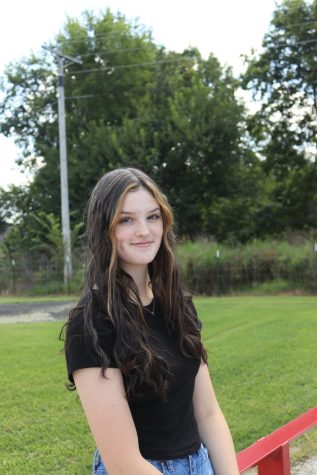
Maddie McCrea, Managing Editor
I am a junior, the managing editor for Wingspan this year, and I joined Wingspan the second semester of the 2020-2021 school year. I love band, hanging out with my friends, and being a part of Wingspan.




